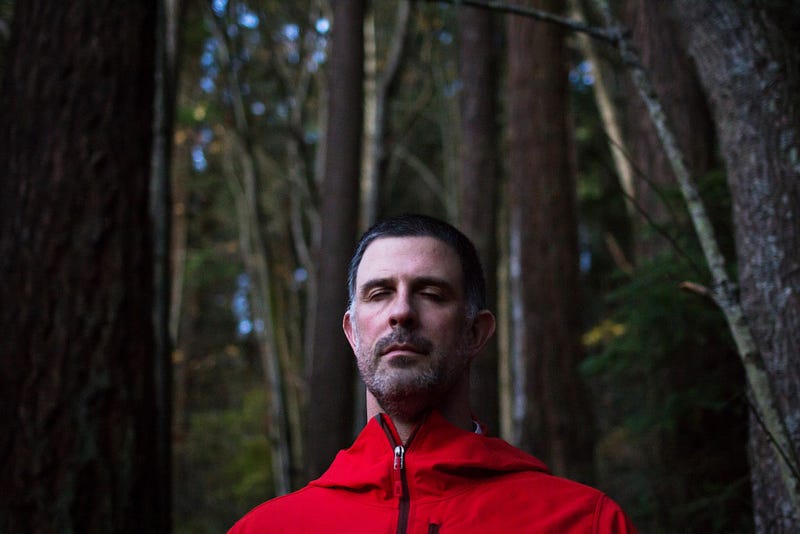Awakened
Living life in the present
STORY BY DANIEL ROTH | PHOTOS BY DANIELLA BECCARIA AND IVY FERGUSON
Mindfulness: maintaining a moment-by-moment awareness of thoughts, feelings and surrounding environments.
Simply being present is at the core of mindfulness, a new name for a very old practice and way of thinking that has, in the past few decades, taken hold among many therapists, counselors and psychologists. It’s been the subject of countless studies where it has shown to help people cope with chronic pain, slow the aging process and prevent relapse from depression.
Mindfulness as a practice increased over the past couple of decades largely thanks to a man named Jon Kabat-Zinn, a doctor whose studies in Buddhist meditation led him to apply those concepts to modern medicine.
Kabat-Zinn teaches that mindfulness is paying attention in a particular way, on purpose, in the present moment, non-judgmentally.
Many seem to agree. Since its start in 1979, Kabat-Zinn’s mindfulness program, Mindfulness-Based Stress Reduction (MBSR), has become a widely used tool for treating a variety of different conditions. Swedish Medical Center in Seattle, for instance, offers a MSBR program to help individuals with chronic pain, anxiety, fatigue, cancer and more. Evidence suggests it can be helpful for preventing relapse into depression as medication.
Philip Burns is a counselor at Western’s health center. He often uses mindfulness to help students with anxiety and depression, and he holds a six-week introductory course in mindfulness for students every quarter. When explaining mindfulness to new patients, he favors Kabat-Zinn’s definition.

He notices most people find that definition straightforward, up until the nonjudgmental part. We learn to be automatic judgers of experience, Burns says, associating certain experiences with the feelings we get from them: the enjoyment of eating chocolate, say, or the feelings of love from a significant other.
“Most of the time I think it’s pretty helpful for us to do that. We decide what’s working and what’s not working based on what feels right and seems to help us perform well,” Burns says. “But there are times when being so automatically judgmental, we tell this story about something and it cuts off our ability to actually show up and be present for something.”
Since we’re so used to our emotions guiding our responses to experiences, it can feel sort of counterintuitive to not do it. What mindfulness asks of a person is to step back from the way they are feeling and try to examine their situation, in order to get a fuller picture of what’s going on.
It’s so easy to not be present. The world we live in today can feel fraught with ways to remove us from the current moment, such as the great crowded swirling mass of content that is the Internet, all vying for our attention.
“Distraction is there at a moment’s notice, and I think over time we get good at distracting ourselves and we don’t want to be very mindful and pay attention to it,” Burns says. “So in some ways when we’re doing mindfulness, we’re asking people to just stop and pay attention and tolerate the uncomfortable experiences or even the pleasant experiences. A lot of times it’s like, what happens if we just stop trying to get away from the feelings we’re having and just let ourselves feel them in the present moment. “
Even though we find ourselves faced with more distractions, there are new opportunities for making mindfulness increasingly accessible. There’s an abundance of mindfulness meditation apps out there — Stop, Breathe & Think is one, offering guided meditations in exchange for your mental, physical and emotional status.
There are a million different ways to practice mindfulness and apply it to your life, Burns says.
“Meditation is the way to practice it so it comes more easy to you in the rest of your life. If you practice it, then you’ll find that you more easily remember to slip into a mindful attitude,” he says.
Many people Burns sees in his profession are apprehensive about meditating, seeing it as intimidating, but in reality, it’s a simple practice.
All of this does require a certain degree of commitment and work on the part of the practitioner. Though it’s not instantaneous, the practice can be greatly rewarding. Burns, for instance, finds mindfulness to be really freeing.
Pay attention to the breath, inhale cool air in and exhale warm air out. As the mind starts to wander, bring it back to the breath.
